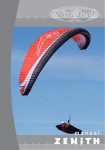Download keara - Free
Transcript
APCO Aviation Setting Future Standards Factory: 7, Chalamish Street - Industrial Park - Caesarea 38900 ISRAEL www.apcoaviation.com www.apcoaviation.com CONTENTS: 1 DISCLAIMER OF LIABILITY ........................................................................................7 2 CONSTRUCTION.........................................................................................................7 3 MATERIALS .................................................................................................................7 4 HIT VALVES (High speed In-Take) ..............................................................................7 5 FLEXON® LEADING EDGE BATTENS ........................................................................8 6 TRIMMING ...................................................................................................................9 7 HARNESS ....................................................................................................................9 8 SPEED SYSTEM..........................................................................................................9 8.1 ASSEMBLY & ADJUSTMENT...............................................................................9 8.2 OPTION 1..............................................................................................................9 8.3 OPTION 2............................................................................................................10 9 EMERGENCY PARACHUTE ATTACHMENT ............................................................11 10 RISERS & TRIMMERS ...........................................................................................11 11 INSPECTION ..........................................................................................................13 11.1 GENERAL ...........................................................................................................13 11.2 BRAKE SETTING................................................................................................13 11.3 FIRST CHECK AND PREFLIGHT INSPECTION ................................................13 11.4 REGULAR INSPECTION CHECKS ....................................................................13 11.5 LINE MAINTENANCE .........................................................................................14 12 LAUNCHING ...........................................................................................................14 12.1 LAYOUT ..............................................................................................................14 12.2 ALPINE LAUNCH OR FORWARD LAUNCH ......................................................15 12.3 STRONG WIND AND REVERSE LAUNCH ........................................................15 12.4 TOW OR WINCH LAUNCHING...........................................................................15 13 FLIGHT TECHNIQUES...........................................................................................15 13.1 FLYING SPEED ..................................................................................................15 13.2 THERMAL FLYING .............................................................................................16 13.3 ASYMMETRIC COLLAPSE.................................................................................16 13.4 CRAVAT ..............................................................................................................16 13.5 FRONT STALL OR SYMMETRIC COLLAPSE....................................................16 13.6 B-STALL ..............................................................................................................17 13.7 BIG EARS ...........................................................................................................17 13.8 DEEP STALL OR PARACHUTAL STALL ...........................................................17 13.8.1 Signs of parachutal stall ...............................................................................17 13.8.2 Exit from parachutal stall ..............................................................................17 13.9 FULL STALL........................................................................................................18 13.10 NEGATIVE TURN (Stall on one side) ..............................................................18 13.11 SPIRAL DIVES ................................................................................................18 13.12 STRONG TURBULENCE ................................................................................19 13.13 STEERING NOT FUNCTIONING ....................................................................19 14 LANDING ................................................................................................................19 14.1 TREE LANDING ..................................................................................................20 14.2 WATER LANDING...............................................................................................20 14.3 LANDING IN TURBULENCE...............................................................................20 15 PACKING................................................................................................................20 16 MAINTENANCE & CLEANING ...............................................................................20 17 STORAGE ..............................................................................................................20 18 DAMAGE ................................................................................................................21 19 GENERAL ADVICE.................................................................................................21 20 KEARA EXTRA SMALL SKETCHES AND CERTIFICATION .................................22 2 www.apcoaviation.com 20.1 SKETCHES .........................................................................................................22 20.2 CERTIFICATION .................................................................................................24 20.2.1 AFNOR.........................................................................................................24 21 KEARA SMALL SKETCHES AND CERTIFICATION ..............................................25 21.1 SKETCHES .........................................................................................................25 21.2 CERTIFICATION .................................................................................................27 21.2.1 DHV..............................................................................................................27 21.2.2 AFNOR.........................................................................................................29 22 KEARA MEDIUM SKETCHES AND CERTIFICATION ...........................................30 22.1 SKETCHES .........................................................................................................30 22.2 CERTIFICATION .................................................................................................32 22.2.1 DHV..............................................................................................................32 22.2.2 AFNOR.........................................................................................................34 23 KEARA LARGE SKETCHES AND CERTIFICATION..............................................35 23.1 SKETCHES .........................................................................................................35 23.2 CERTIFICATION .................................................................................................37 23.2.1 DHV..............................................................................................................37 3 www.apcoaviation.com !!! WARNING This is not a training manual. It is extremely dangerous to yourself and others to attempt to fly this or any paraglide without first completing a flying course given by a qualified instructor. Apco Aviation's gliders are carefully manufactured and inspected by the factory. Please use the glider only as described in this manual. Do not make any changes to the glider. AS WITH ANY SPORT - WITHOUT TAKING THE APPROPRIATE PRECAUTIONS, PARAGLIDING CAN BE DANGEROUS. 4 www.apcoaviation.com GLIDER TECHNICAL DATA Size Cells Area m2 Area (projected) m2 Span (incl. Stabilizer) m Span (projected) m Aspect Ratio Aspect Ratio (projected) Pilot Weight, Kg (all up) Weight of Canopy Kg Root Cord m Tip Cord m Length of Lines on B m Total line used m X-Small (32x3)+(2x2)+6 24.50 21.80 11.90 9.80 5.80 4.40 64 - 80 7.0 2.67 0.50 7.50 320 Small (33x3)+(2x2)+6 25.40 22.70 12.20 10.10 5.95 4.50 79 - 99 7.2 2.67 0.50 7.50 320 Medium (35x3)+(2x2)+6 27.50 24.20 12.90 10.60 6.10 4.70 95 - 115 7.4 2.67 0.50 7.90 345 Large (37x3)+(2x2)+6 29.20 25.80 13.50 11.20 6.40 4.90 105 - 130 7.6 2.67 0.50 8.30 355 LINES Material Type Top (Low Drag Hook-Up) Upper C&D Mid A, B, C & D Std. Comp Dyneema Dyneema Super Aramid Super Aramid Lower Super Aramid Central Lower A&B Super Aramid Upper Brake Cascades Dyneema Steering Line Polyester Super Aramid (Unsheathed) Super Aramid (Unsheathed) Super Aramid (Unsheathed) Super Aramid (Unsheathed) Super Aramid (Unsheathed) Dyneema Diameter Std. Comp Strength Std. Comp 0.8mm 0.8mm 90kg 90kg 1.1mm 0.6mm 80kg 65kg 1.1mm 0.6mm 80kg 65kg 1.7mm 0.9mm 150kg 120kg 2.2mm 1.6mm 220kg 200kg 1.1mm 0.6mm 90kg 65kg 2.2mm 0.9mm 90kg 180kg FABRIC Sail Cloth Rib Reinforcement Warranty 46gr/m2 "Zero Porosity" Ripstop Nylon (Double Siliconized) 80gr/m2 Mylar (Trilam) 3 Years / 250 hours GLIDER PERFORMANCE DATA V-min. V-trim V-max. Min Sink ( at optimum wing loading) 21 km/h 36-38 km/h 58+ km/h 0,9 m/s 5 www.apcoaviation.com GLIDER CERTIFICATION DATA KEARA EXTRA SMALL KEARA SMALL KEARA MEDIUM KEARA LARGE PERFORMANCE (STANDARD VERSION) PERFORMANCE (COMPETITION VERSION) PERFORMANCE (COMPETITION VERSION) - DHV 2 (TRIM & ACCELERETED) DHV 2 (TRIM & ACCELERETED) DHV 2 (TRIM & ACCELERETED) 6 www.apcoaviation.com 1 DISCLAIMER OF LIABILITY Taking into consideration the inherent risk in paragliding, it must be expressly understood that the manufacturer and seller do not assume any responsibility for accidents, losses and direct or indirect damage following the use or misuse of this product. APCO Aviation Ltd. is engaged in the manufacture and sale of hang gliding, paragliding, motorized para/hang gliding and emergency parachute equipment. This equipment should be used under proper conditions and after proper instruction from a qualified instructor. APCO Aviation Ltd. has no control over the use of this equipment and a person using this equipment assumes all risks of damage or injury. APCO Aviation Ltd. disclaims any liability or responsibility for injuries or damages resulting from the use of this equipment. The glider is designed to perform in the frame of the required class as certified by AFNOR / CEN and DHV. 2 CONSTRUCTION The glider is constructed with a top and bottom surface, connected by ribs. One top and bottom panel, together with the connecting ribs is called a cell. Each cell has an opening on the front lower part. The cells fill with air forcing the panels to take the shape dictated by the airfoil (rib) section. On either side the wing ends in a stabilizer or wing tip which provides straight-line stability and produces some outward force to keep the span-wise tension. The Keara has the new Flexon Technology (pat. pending) Leading edge Battens that support the top and the bottom surface leading-edge fabric between the ribs. The front part of the ribs is made from Trilam to keep the leading edge shaped at high speeds and in turbulent air. It also improves the launch characteristics of the glider. The line hook-up points are made of Dyneema or Nylon tape. 3 MATERIALS The glider is made from tear resistant Ripstop Nylon cloth, which is P.U. coated to zero porosity and then siliconized to give the fabric high resistance to the elements. Different cloth is used for the top, bottom and ribs due to their different functions. The lines are made of superaramid covered with a polyester sheath for protection against UV, wear and abrasion. The bottom section of the brake lines is made of polyester because of its better mechanical properties. The carabiners that attach the lines to the risers are made of stainless steel. 4 HIT VALVES (High speed In-Take) 7 www.apcoaviation.com The Keara is equipped with an Active HIT Valve system (patent pending) to improve the overall performance and safety of the wing especially during accelerated flight. The valve system allows maximum inflow of air when the glider is rotated to a lower angle of attack while accelerated. HIT valves open and close in flight to increase the internal pressure of the glider. For the valves to work properly it is important to keep them wrinkle free especially in sub zero temperatures. Make sure the valves are lying flat and are in the closed position when you fold the glider. Before the launch the pilot should check all the valves and ensure that they are flat and closing the entire area of the mesh covered opening. Creased and crumpled valves will not adversely affect the safety of the wing. 5 FLEXON® LEADING EDGE BATTENS This feature dramatically improves the performance of the wing, especially at high speeds. The battens further improve the already superb launch and re-inflation characteristics of the wing. When folding your Keara, take care not to bend the Flexon battens. The battens are easily replaced and can be obtained from your dealer. All battens are of equal length. The Keara is the first glider on the market with Flexon Battens in the leading edge. Flexon Battens hold the shape of the leading edge profile in flight throughout the speed range of the wing, also supporting the top and the bottom surface leading-edge fabric between the ribs keeping the intakes open. This dramatically improves the high-speed performance of the wing because the leading edge of the profile does not deform and retains its proper aerodynamic shape. No special care is needed when folding. The battens generally are maintenance free, however batten sleeves and sleeve ends should be periodically inspected for damage and wear. Missing or damaged battens do not adversely affect the safety of the Keara. The battens are easily removed from the sleeves. 8 www.apcoaviation.com 6 TRIMMING All Apco gliders are trimmed for optimum performance combined with unsurpassed safety. It is very important not to re-trim or tamper with any of the lines or risers as this may alter the performance and safety. Trimming of the brake line should be done in accordance with this manual and carefully checked before flying. 7 HARNESS All of Apco's gliders are developed with the use of ABS (Automatic Bracing System) type harnesses without cross bracing. We recommend the use of an ABS harness with all our gliders. All certified harnesses can be used with our gliders. For best safety and performance we recommend an Apco harness equipped with a Mayday emergency parachute. CAUTION: CROSS BRACING THAT HAS BEEN ADJUSTED TOO TIGHTLY CAN INFLUENCE THE HANDLING OF A GLIDER, AND MAY NOT ACTUALLY LEAD TO HIGHER SAFETY. APCO GLIDERS ARE DEVELOPED AND TESTED WITHOUT THE USE OF CROSS BRACING. USING AN ABS HARNESS WITH CHEST STRAP SET AT THE SPECIFIED WIDTH (CHECK THE AFNOR STICKER ON YOUR GLIDER) WILL RESULT IN THE HIGHEST PASSIVE SAFETY ON YOUR GLIDER 8 SPEED SYSTEM 8.1 ASSEMBLY & ADJUSTMENT Apco gliders are supplied with a speed system as illustrated in option II. The pilot can change the speed system to the traditional "Apco" speed system to use the full accelerator range depending on the pulley arrangement on the harness being used. 8.2 OPTION 1 First attach the harness to the glider, then thread the accelerator line from the top pulley on the riser, through the pulleys (and the elasticized ring if present) on your harness and then attach it to the supplied speed bar. To adjust the length and activation point of the speed system, sit in the harness and ask someone to hold the riser up in a flying position. By pulling out the end of the line protruding above the upper pulley on the riser and by moving the knot you can adjust the speed system. The Bar should be about 10 cm (or closer if you have a second step) away from the front of the harness seat. This allows you to use the full range of the speed bar if you extend your legs fully. Do not adjust the speed system too short as this will cause the speed system to be activated permanently while flying and could be dangerous. It is possible to fit a second step to the system if the pilot has trouble using the full range of the speed system (second step is supplied separately). 9 www.apcoaviation.com Figure 8-1 8.3 OPTION 2 First attach the harness to the glider. Remove the Chain Link from the end of the accelerator line attached to the speed bar, then thread it through the elasticized ring on the harness, then through harness pulley and then re-attach it to the Chain link with a larkshead knot. Hook the Chain link onto the Chain Link on the riser of the corresponding side. Sit in the harness and have someone hold the riser up in a flying position for you. Adjust the speed bar line by pulling the end through the speed bar tube and moving the knot. The Bar should be about 10 cm (or closer if you have a second step) away from the front of the harness seat. This allows you to easily reach the bar with your foot, and will allow you to use the full range of the speed bar if you extend your legs fully. Do not adjust the speed system too short, as this will cause it to be activated permanently while flying, and could be dangerous. It is possible to fit a second step to the system, if one has trouble using the full range of the system (supplied separately). 10 www.apcoaviation.com Figure 8-2 9 EMERGENCY PARACHUTE ATTACHMENT It is recommended to use a certified rescue parachute when flying. Attaching the rescue parachute should be done in accordance with the recommendation of the harness and reserve parachute manufacturer. 10 RISERS & TRIMMERS The Keara is fitted with a 4 branch riser system equipped with accelerator and trimmers. The riser geometry allows a very clean rotation of the wing when accelerating, maintaining perfect control of the profile. The neutral trim position is when all four branches of the risers are of equal length (fully open). This is the best trim setting for launch, glide and landing. We recommend closing the trimmers only for thermal flying, giving the best sink rate and handling for this purpose. CAUTION: WHEN THE TRIMMERS ARE CLOSED, THE GLIDER FLIES AT A HIGHER ANGLE OF ATTACK, AND THE STALL POINT WILL BE AT A DIFFERENT POINT IN THE BRAKE RANGE. AT NO TIME SHOULD THE PILOT CHANGE THE RISERS OR USE RISERS NOT INTENDED FOR THIS SPECIFIC GLIDER AS THIS WILL AFFECT THE PERFORMANCE AND SAFETY OF THE GLIDER. 11 www.apcoaviation.com Figure 10-1 12 www.apcoaviation.com 11 INSPECTION 11.1 GENERAL Pilots, please insure that your glider has been test flown and checked by your dealer before taking it into your possession. 11.2 BRAKE SETTING Before the first flight the pilot/dealer has to take his/her glider and inflate it to check brake length and if needed shorten or lengthen the brake setting to his or her preference. It is important that the brakes are not set too short. If the glider is above your head the brakes should not be pulling the trailing edge down as that means that the brakes are too short. A good setting is to have about 10 cm of slack in the brake from the brake guide on the riser to the activation point of the brakes. (See Diagram below) Figure 11-1 Brake Line Adjustment 11.3 FIRST CHECK AND PREFLIGHT INSPECTION With every new glider, the following points should be checked: • Connection points between the glider and the harness. • Check that there are no lines twisted, tangled or knotted. • Check that the risers and speed-system are hooked up to the harness correctly. 11.4 REGULAR INSPECTION CHECKS • Damage to lines, webbing and thread on the stitching of the harness and risers. • That the stainless steel connection links on the risers are not damaged and are fully closed. • The pulleys of the speed system are free to move and the lines are not twisted. 13 www.apcoaviation.com • The condition of the brake lines, stainless steel ring and the security of the knot attaching the brake handle to the brake line. • The sewing, condition of the lines and connection of the lines. • Damage to hook up points on the glider. • Internal damage to the ribs and diagonal ribs. • Damage to the top and bottom panels and seams between panels. • Inspect the Flexon battens for kinks and bends. • Check the batten sleeves and sleeve ends for wear or punctures. 11.5 LINE MAINTENANCE Four groups of suspension lines and one brake line are attached to each riser. The three groups are called A, B, C, D and brake lines. The stabilizer lines are connected along with the B-lines. Superaramid lines are known to be sensitive to the influence of the elements. They must be carefully inspected periodically. In his/her own interest, the pilot must observe the following points to ensure maximum performance and safety from the glider: • Avoid sharp bending and squeezing of lines. • Take care that people do not step on the lines. • Do not pull on the lines if they are caught on rocks or vegetation. • Avoid getting the lines wet. If they do get wet, dry them as soon as possible at room temperature and never store them wet. IT IS MANDATORY TO CHANGE THE BOTTOM LINES ON EVERY PARAGLIDER ONCE A YEAR OR EVERY 100 HOURS, WHICH EVER COMES FIRST. THE REST OF THE LINES MUST BE CHECKED YEARLY AND REPLACED IF NECESSARY. NEVER REPLACE THE LINES WITH DIFFERENT DIAMETER OR TYPE OF LINES AS ALL GLIDERS WERE LOAD TESTED FOR SAFETY IN THEIR ORIGINAL CONFIGURATION. CHANGING LINE DIAMETER/STRENGTHS CAN HAVE FATAL CONSEQUENCES. Every six months one lower A, B, C and D line must be tested for minimum 50 % of the rated strength. If the line fails under the load test or does not return to its specified length all the corresponding lines must be replaced. Professional use of gliders: Towing, tandem, schooling and competition flying requires more frequent line inspection and replacement of A, B, C, D and brake lines. 12 LAUNCHING As this is not a training manual we will not try to teach you launching techniques. We will only briefly go through the different launch techniques to help you get the most out of your glider. 12.1 LAYOUT Pre-flight check should be done before every flight. Spread the glider on the ground. Spread the lines, dividing them into ten groups A, B, C, D and brake lines left and right. Make sure the lines are free and not twisted or knotted. Make sure all the lines are on top of the glider and that there are none caught on vegetation or rocks under the glider. Lay out the glider in a horseshoe shape. This method insures that all the lines are equally tensioned on launch, and results in an even inflation. The Mylar rib section and the Flexon 14 www.apcoaviation.com rib reinforcements will keep the leading edge open for easy inflation. The most common reason for a bad launch is a bad layout! 12.2 ALPINE LAUNCH OR FORWARD LAUNCH The Keara has very good launch behavior in no wind conditions. For the best results we recommend the following: lay the glider out and position yourself in line with the center of the wing with, the lines almost taught. With a positive and constant force inflate the wing holding only the A-risers, and smoothly increase your running speed. The wing will quickly inflate and settle above the pilots head without the tendency to stick behind, the pilot might have to pull some brake to stop the wing from overshooting the pilot on an aggressive run. After you leave the A-risers, apply about 10-15% brakes and the KEARA will gently lift you off the ground. 12.3 STRONG WIND AND REVERSE LAUNCH The Keara has a lot of lifting power and care should be taken in strong wind. It is advisable to have an assistant hold the pilot when attempting a strong wind launch. It also helps if you leave the A-riser just before the glider gets above your head. Then pull a bit of brake to stop the wing from overshooting , but not too much as the glider might pull you off your feet too early. The assistant should let the pilot walk in under the wing on inflation rather than resist the inflation; this reduces the tendency of the glider to lift the pilot prematurely. 12.4 TOW OR WINCH LAUNCHING All Apco gliders are well suited for winching and have no bad tendencies on the winch. With towing it is important to have the wing above your head on launch and not to try and force a stalled wing into the air. This is especially important if the winch operator is using high tension on the winch. Very little brake if any need be applied on launch and during the winch. Directional changes can be made with weight shift rather than brakes. While on tow, the brake pressure will be higher and more input may be needed to make corrections than in normal flight. 13 FLIGHT TECHNIQUES 13.1 FLYING SPEED Indicated trim speed is dependant on the amount of brake the pilot is using, wing loading, altitude above sea level and the accuracy and make of speed probe. The speeds recorded were at optimum wing loading at sea level using a Skywatch Pro; thus there could be a slight variation in speed range numbers that a pilot records. NOTE: The speeds indicated in the technical data sheet are the correct speeds measured at sea level using a calibrated instrument flying at optimum wing loading. Speed readings in the flight reports could differ as this was measured during testing using various instruments and is an indication of the difference between trim, stall and top speed. The speed range will be the same but the actual numbers may differ. • With 0% brake the Keara will fly at 37 km/h with a sink rate of 1.1 m/s. • At 25% brake the glider will fly at 31km/h with minimum sink rate 0.9 m/s. • The best glide angle is achieved with 0% brakes and about ¼ speedbar at a speed of 42 km/h. 15 www.apcoaviation.com • With 80% brake the glider will fly at about 23km/h and will be close to the stall point 21km/h. CAUTION: APART FROM WHEN FLARING AT LANDING THERE SHOULD BE NO REASON TO FLY WITH 70% TO 100% BRAKE. THE SINK RATE OF THE GLIDER WILL BE EXCESSIVE AND THERE WILL BE A POSSIBILITY OF ENTERING A DEEPSTALL OR FULLSTALL SITUATION. THERE IS ALSO THE RISK OF GOING NEGATIVE OR ENTERING A SPIN WHEN ATTEMPTING TO TURN THE GLIDER NEAR THE STALL SPEED. WARNING: The use of the speed system in turbulent conditions or close to the ground is dangerous. While flying with the accelerator, the glider has a reduced angle of attack and is therefore more susceptible to turbulence and may collapse or partially deflate. Gliders react faster when accelerated and may turn more. The accelerator should immediately be released in this case. 13.2 THERMAL FLYING The Keara has excellent thermaling capacity and will be a pleasure in competition when you are in a big gaggle or just having fun on a long XC flight. The glider has high internal pressure and needs very little pilot input even in very turbulent conditions. In light lift it is advised to make flat turns to keep the glider from banking too much and avoid increasing the sink rate. In strong lift conditions it is most effective to have small turns in the core with relatively high bank. To achieve this use as little as possible brake on the outside wing, while weight shifting and applying brake on the inside. The Keara is fast and has a very high lift profile, to attain the best climb rate, close the trimmers while ridge and thermal soaring (see notes for RISERS & TRIMMERS). 13.3 ASYMMETRIC COLLAPSE If one side of the glider partially folds or collapses it is important to keep your flying direction by applying some brake on the opposite side. The wing should re-inflate on its own without any input from the pilot. To help re-inflation it is possible to pull some brake on the collapsed side and release immediately. In the event of a big deflation, i.e. 70%, it is important to give brake in the opposite direction but care must be taken not to pull too much as you could stall the flying side. The glider is very solid and has a very strong tendency to re-inflate after any collapses. 13.4 CRAVAT In case a cravat should occur from an asymmetric collapse or other manoeuvres, it can usually be opened by pulling down on the stabilo line of the affected side while countering the turn with the opposite brake and weight shift. It also helps sometimes to pull Big Ears to release the tension on the affected lines, or a combination of the above techniques, i.e. pulling on the stabilo after pulling Big Ears. 13.5 FRONT STALL OR SYMMETRIC COLLAPSE In the event of a front stall the glider will normally re-inflate on its own immediately without any change of direction. To speed up re-inflation briefly apply 30-40% brake (to 16 www.apcoaviation.com pump open the leading edge). Do not hold the brakes down permanently to avoid an unwanted stall. 13.6 B-STALL The Keara has a very clean stable B stall. To enter the B stall the pilot has to pull the first 20-cm slowly until the glider loses forward speed and starts to descend vertically. Then the pilot can pull more on the B until he/she attains a stable 7 to 9 m/s descent rate. The Glider has no tendency to front rosette or become pitch unstable. To exit the B stall the pilot releases the B slowly until the glider has regained its shape and then the last 15 cm fast to prevent the glider from entering deepstall. The Keara can be controlled directionally in the B stall by pulling more on one B riser than on the other to create a turn in any direction. The B-stall is a safe controlled way of losing altitude fast without any forward speed. 13.7 BIG EARS Altitude can be lost in a controlled way by collapsing both tips. To do this, take the outer-most A-line (attached on its own riser) on either side and pull them down until the tips collapse. Pulling one side at a time may be more comfortable and easier, especially for smaller pilots. This should close about 30% of the wing in total. It is possible to steer with weight shift. To increase the sink rate the pilot can push the speed system after he/she has collapsed the tips. This can give up to about 7 m/s sink-rate with about 45-km/h forward speed. To exit, release the speed system and then release the tip A-lines. It may sometimes be necessary to apply a little brake to open the tips. If using the brakes to open the tips, it is best to open one tip at a time, this avoids reducing your air-speed. CAUTION: DO NOT ATTEMPT ANY EXTREME MANEUVRES WITH THE TIPS COLLAPSED AS THIS DOUBLES THE LOAD ON THE CENTER LINES AND ATTACHMENT POINTS AND COULD LEAD TO FAILURE. 13.8 DEEP STALL OR PARACHUTAL STALL Under normal flying conditions the Keara will have no tendency to enter deep stall. All gliders can however under certain conditions enter and stay in deep stall configuration (as a result of ageing of materials, improper maintenance or pilot induced). 13.8.1 Signs of parachutal stall • The pilot has very little or no forward speed and no wind in his face. • The glider will be fully open but the cells will be bulging in and not out on the bottom surface. • The glider might have a very slow turning sensation. • You will have an increased vertical descent. 13.8.2 Exit from parachutal stall It is important to recognize this situation. Most accidents involving parachutal stall happen because the pilot did not realize that he was in deep stall. 17 www.apcoaviation.com The best way to exit a parachutal stall is to pull the A risers down to get the wing flying again. The pilot can pull the riser down until the wing starts to fly again. The moment the wing starts to fly the pilot should release the A riser, or the wing might suffer a frontal collapse. Alternatively the pilot can push the speed bar to lower the angle of attack and get the wing flying again. By pulling one or both brakes while in deep stall the pilot can accidentally enter a full stall or spin. 13.9 FULL STALL To induce a full stall, apply full brake on both sides. The glider slows down steadily until it stalls completely. The canopy suddenly surges backwards a long way. In spite of this uncomfortable reaction of the canopy, both brake lines must be consequently held down with all your strength (if possible look your arms under the seat) until the canopy is stabilized ( directly overhead.) The Keara generally flies backwards during a full-stall but doesn’t always form a Rosette. To recover from a full-stall, both brakes must be let up symmetrically at a fast to moderate speed (within 1-2 seconds). The Keara surges forward a moderate amount after recovering from a full-stall. Gentle symmetrical braking as soon as the wing begins to move forward is recommended. An asymmetric recovery (one control released faster than the other) from a full-stall can cause a big dynamic collapse. The full-stall is a hazardous manoeuvre and should be only done under the right Safety preparations. 13.10NEGATIVE TURN (Stall on one side) In strong Turbulence, wrong entry into a Turn or wrong reaction at big asymmetric Collapse, can possibly pull the Keara into a Negative Turn. The Keara shows the Pilot this early before happening, because the inner side of the Canopy gets "soft" and the trailing edge starts to tighten backwards. As well the Pilot feels the loss of tension on one side of the Harness. If you enter such a Situation unexpectedly immediately release the brake which is pulled to much, the Keara will recover in this case immediately. If you will not release the brake, the glider will go into a Negative Turn. Release the brake only if the canopy is in front of the Pilot position. Never do this when the glider is falling back. Correctly done the Keara flies after a quarter Turn and will move smoothly forward stabile again. The Negative turn is like the full-stall a hazardous manoeuvre and should be only done under the right Safety preparations. 13.11SPIRAL DIVES The Keara has very good behaviour in spiral and has no tendency to stick in the spiral. By progressively applying brake on one side the glider can be put into a spiral dive. Safe high sink rates can be achieved like this. The spiral has to be exited slowly by releasing the brake over one complete turn or the glider may pitch forward and possibly suffer a collapse. Care must be taken that the pilot has enough height to exit the spiral safely. Sink rates in excess of 19m/s can be obtained. 18 www.apcoaviation.com CAUTION: SOME GLIDERS CAN BE NEUTRAL IN SPIRAL AND MAY NOT EXIT WITHOUT PILOT INPUT. TO EXIT A NEUTRAL SPIRAL THE PILOT HAS TO LEAN HIS/HER WEIGHT TO THE OUTSIDE OF THE TURN OR APPLY BRAKE ON THE OUTSIDE WING. AS SOON AS THE GLIDER STARTS TO SLOW DOWN IN THE SPIRAL THE OUTSIDE BRAKE MUST BE RELEASED. PILOTS CAN SUFFER BLACK OUTS IN SPIRALS AND THE PILOT HAS TO EXIT THE SPIRAL AS SOON AS he/she FEELS ANY ABNORMAL SYMPTOMS (Black dots in field of vision or light-headedness). 13.12STRONG TURBULENCE NEVER FLY IN STRONG TURBULENCE! If you unexpectedly encounter strong turbulence, fly with about 20% brake applied to increase the internal pressure and the angle of attack of the canopy and land as soon as possible. If the air is turbulent on landing approach, land with Big Ears. Learn to fly actively and to anticipate collapses and prevent them by applying brake when needed before you have unwanted collapses. 13.13STEERING NOT FUNCTIONING If the pilot cannot reach the brake or steering lines for any reason or if they are not functioning properly, (for example: If they break on a damaged point) he or she can control the glider by pulling down on the C-risers. Care must be taken when steering like this, as much less input is needed to turn the wing and the response of the wing is also much slower than when using the brakes. IF YOU PULL TOO MUCH ON ONE OR BOTH RISERS THE GLIDER WILL SPIN OR STALL. On the landing flare the pilot should be especially careful not to stall the glider too high. 14 LANDING Before landing the pilot should determine the wind direction, usually by checking a windsock, flags, smoke or your drift over the ground while doing one or more 360o turns. • Always land into the wind. • At a height of about 50 meters your landing setup should begin. The most commonly used one is to head into the wind and depending on the wind strength the pilot should reach his/her landing point by making s-turns. • At a height of about 15 meters the final part of your descent should be made at trim speed into the wind. • At a height between half a meter and one meter you can gently flair the glider by pulling gradually down on the brakes to the stall point. When top-landing it is sometimes not necessary to flare or a much smaller flare may be required, especially in strong ridge conditions. 19 www.apcoaviation.com 14.1 TREE LANDING If it is not possible to land in an open area, steer into the wind towards an unobstructed tree and do a normal landing approach as if the tree is your landing spot. Flare as for a normal landing. On impact hold your legs together and protect your face with your arms. After any tree landing it is very important to check all the lines, line measurements, and the canopy for damage. 14.2 WATER LANDING As you approach landing, release all the buckles (and cross-bracing if present) of the harness except for one leg. Just before landing, release the remaining buckle. It is advisable to enter the water downwind. Let the canopy rotate completely forward until it hits the water with the leading edge openings; the air inside will then be trapped, forming a big air mattress and giving the pilot more time to escape. Less water will enter the canopy this way, making the recovery much easier. Get away from the glider and lines as soon as possible, to avoid entanglement. Remember that a ballast bag can be emptied and then inflated with air for a flotation aid. The canopy should be carefully inspected after a water landing, since it is very easy to cause internal damage to the ribs if the canopy is lifted while containing water. Always lift the canopy by the trailing edge, not by the lines or top or bottom surface fabric. 14.3 LANDING IN TURBULENCE One of the safest ways to land a glider in turbulent conditions is to use Big Ears. This reduces the chances of getting a collapse while on final approach. Use weight shift to control your approach. It is possible to keep the ears in until you are ready to flare the glider. Simply release the A-risers and flare the glider, starting a little higher than usual. Practice this in normal conditions before you need it in an emergency. 15 PACKING Spread the canopy completely out on the ground. Separate the lines to the left and the right side of the glider. If the risers are removed from the harness, join the two risers together by passing one carabiner loop through the other. This keeps them neatly together and helps to stop line tangles. Fold the canopy alternately from the right and left sides, working towards the center, press out the air, working from the rear towards the front. Place the risers at the trailing edge of the folded canopy and use them to finally roll up the canopy. 16 MAINTENANCE & CLEANING Cleaning should be carried out with water and if necessary, gentle soap. If the glider comes in contact with salt water, clean thoroughly with fresh water. Do not use solvents of any kind, as this may remove the protective coatings and destroy the fabric. 17 STORAGE When the glider is not in use, the glider should be stored in a cool, dry place. A wet glider should first be dried (out of direct sunlight). Protect the glider against sunlight (UV 20 www.apcoaviation.com radiation). When on the hill keep the glider covered or in the bag. Never store or transport the glider near paint, petrol or any other chemicals. 18 DAMAGE Using spinnaker repair tape (for non-siliconized cloth) can repair tears in the sail (up to 5cm). A professional repairer should repair greater damage. 19 GENERAL ADVICE A qualified person or agent of the company should check the glider every year. The glider is carefully manufactured and checked by the factory. Never make changes to the canopy or the lines. Changes can introduce dangerous flying characteristics and will not improve flying performance. Do not put the glider in direct sunlight when not necessary. In order to protect the glider during transportation or waiting time we recommend one of our lightweight storage bags. If you have any doubts about flying conditions-do not begin. If you have any questions, please contact your dealer or us. Lastly, be equipped with a certified emergency parachute and helmet on every flight. 21 www.apcoaviation.com 20 KEARA EXTRA SMALL SKETCHES AND CERTIFICATION 20.1 SKETCHES 22 www.apcoaviation.com 23 www.apcoaviation.com 20.2 CERTIFICATION 20.2.1 AFNOR SHV FSVL Category: Catégorie: PERFORMANCE PERFORMANCE Reference number Standards AFNOR S52-308/309 G 607/03 N° de conformité aux normes AFNOR S52-308/309 Certified date: 13 /12 / 2002 Date de délivrance: MANUFACTURED / MARQUE: APCO AVIATION MODEL / MODÈLE: KEARA XS Configuration during the tests / Configuration en tests Minimum flying weight: Poids mini total en vol: 64 kg Type of harness Harnais 80 kg Manufactured: Marque: Maximum flying weight: Poids maxi total en vol ABS APCO AVIATION APCO Weight of the model: Poids du modèle: 7 kg Model: Modèle: Number of risers: Nombres d'élévateurs: Seat/maillons distance: Distance maillons/assise: 40 cm 4 Chest strap adjust: Entr'axe maillons: 42 cm Accessories / Accessoires Range of seed barre: Accélérateur: in cm Breakes speed range: in Km/h Plage de vitesse aux freins: Check every: Révision tous les: 22 cm 15 km/h Range of trimmers:in cm Afficheurs: 2 cm Range with accessories:in Km/h Plage de vitesse avec accéssoires: 26 Km/h After 100 flights or 1 year Après 100 vols ou 1 année Warning: before use refer to the user's manual Avertissement: avant utilisation, prendre connaissance des instructions du manuel de vol ! 24 www.apcoaviation.com 21 KEARA SMALL SKETCHES AND CERTIFICATION 21.1 SKETCHES 25 www.apcoaviation.com 26 www.apcoaviation.com 21.2 CERTIFICATION 21.2.1 DHV TEST REPORT DHV 9 7 APCO K EARA S Type Apco Keara S Certificate-No DHV GS-01-1066-03 Holder of certificate Apco Aviation Ltd. Manufacturer Apco Aviation Ltd. Classification 2 GH Winch tow Yes Number of seats min / Number of seats 1 / 1 max Accelerator? Yes Trimmers? Yes BEHAVI OUR AT MI N WEIGHT BEHAVI OUR AT MAX WEIGHT I N FLIGHT (7 9 K G ) I N FLIGHT (9 9 K G ) Take off 2 Inflation evenly, immediately Rising behaviour comes over pilot delayed 2 evenly, immediately comes over pilot delayed Take off speed average average Take off handling average average Straight flight 2 Trim speed [km/h] 34 37 Accelerated speed [km/h] 0 54 Roll damping average Turn handling 2 2 average 2 Spin tendency average average Control travel average average Agility high high 2 2 Symmetric stall Deep-stall limit average 60 cm - 75 cm average 60 cm - 75 cm Full stall limit average 65 cm - 80 cm average 65 cm - 80 cm Increase in steering power high Front collapse 2 Pre-acceleration slight Opening behaviour spontaneous, delayed Front collapse (accelerated) - Pre-acceleration - high 2 slight spontaneous, delayed 2 slight Opening behaviour - spontaneous, delayed - Asymmetric collapse 2 2 27 www.apcoaviation.com Turn tendency 90 - 180 degrees Rate of turn average with deceleration Loss of altitude average Stabilization countersteering easy Opening behaviour spontaneous, delayed Asymmetric collapse - (accelerated) Turn tendency - 90 - 180 degrees average with deceleration average countersteering easy spontaneous, delayed 2 90 - 180 degrees Rate of turn - average - with deceleration Loss of altitude - average Stabilization - spontaneous Opening behaviour - spontaneous, quickly - Countersteering an asymmetric collapse 2 Stabilization countersteering easy Control travel average 2 countersteering easy average Control pressure increase high high Turn in opposite direction easy, no tendency to stall easy, no tendency to stall Opening behaviour spontaneous, delayed spontaneous, delayed Full stall, symm. exit 2 2 Full stall, asymm. exit 2 2 Spin out of straight flight 1-2 1-2 Spin out of turn 1-2 1-2 Spiral dive 2 2 Entry average average Spin tendency average average Exit spontaneous B-line stall 1-2 Entry easy Exit spontaneous Landing 1-2 Landing behaviour easy spontaneous 1-2 easy spontaneous 1-2 easy Supplementary remarks 28 www.apcoaviation.com 21.2.2 AFNOR 29 www.apcoaviation.com 22 KEARA MEDIUM SKETCHES AND CERTIFICATION 22.1 SKETCHES 30 www.apcoaviation.com 31 www.apcoaviation.com 22.2 CERTIFICATION 22.2.1 DHV TEST REPORT DHV 9 7 APCO K EARA M Type Apco Keara M Certificate-No DHV GS-01-1067-03 Holder of certificate Apco Aviation Ltd. Manufacturer Apco Aviation Ltd. Classification 2 GH Winch tow Yes Number of seats min / Number of seats 1 / 1 max Accelerator? Yes Trimmers? Yes BEHAVI OUR AT MI N WEIGHT BEHAVI OUR AT MAX WEIGHT I N FLIGHT (9 0 K G ) I N FLIGHT (1 15 K G ) Take off 2 Inflation evenly, immediately Rising behaviour comes over pilot delayed Take off speed average Take off handling easy Straight flight 2 evenly, immediately comes over pilot delayed average easy 1-2 Trim speed [km/h] 33 37 Accelerated speed [km/h] 0 54 Roll damping average Turn handling 1-2 2 average 2 Spin tendency slight slight Control travel average average Agility average average Symmetric stall 2 2 Deep-stall limit average 60 cm - 75 cm average 60 cm - 75 cm Full stall limit average 65 cm - 80 cm average 65 cm - 80 cm Increase in steering power average Front collapse 2 Pre-acceleration slight Opening behaviour spontaneous, delayed Front collapse (accelerated) - Pre-acceleration Opening behaviour - average 2 slight spontaneous, delayed 2 slight spontaneous, quickly - 32 www.apcoaviation.com Asymmetric collapse 2 Turn tendency 90 - 180 degrees Rate of turn average with deceleration Loss of altitude average Stabilization spontaneous Opening behaviour spontaneous, quickly Asymmetric collapse - (accelerated) Turn tendency - 2 90 - 180 degrees average with deceleration average spontaneous spontaneous, quickly 2 90 - 180 degrees Rate of turn - average - with deceleration Loss of altitude - average Stabilization - spontaneous Opening behaviour - spontaneous, quickly - Countersteering an asymmetric collapse 2 Stabilization countersteering easy Control travel average 2 countersteering easy average Control pressure increase high high Turn in opposite direction easy, no tendency to stall easy, no tendency to stall Opening behaviour spontaneous, quickly spontaneous, quickly Full stall, symm. exit 2 2 Full stall, asymm. exit 2 2 Spin out of straight flight 1-2 1-2 Spin out of turn 1-2 1-2 Spiral dive 2 2 Entry easy easy Spin tendency average Exit spontaneous B-line stall 1-2 Entry easy Exit spontaneous Landing 1-2 Landing behaviour easy average spontaneous 1-2 easy spontaneous 1-2 easy Supplementary remarks 33 www.apcoaviation.com 22.2.2 AFNOR 34 www.apcoaviation.com 23 KEARA LARGE SKETCHES AND CERTIFICATION 23.1 SKETCHES 35 www.apcoaviation.com 36 www.apcoaviation.com 23.2 CERTIFICATION 23.2.1 DHV TEST REPORT DHV 9 7 APCO K EARA L Type Apco Keara L Certificate-No DHV GS-01-1068-03 Holder of certificate Apco Aviation Ltd. Manufacturer Apco Aviation Ltd. Classification 2 GH Winch tow Yes Number of seats min / Number of seats 1 / 1 max Accelerator? Yes Trimmers? Yes BEHAVI OUR AT MI N WEIGHT BEHAVI OUR AT MAX WEIGHT I N FLIGHT (1 05 K G ) I N FLIGHT (1 30 K G ) Take off 2 Inflation evenly, immediately Rising behaviour comes over pilot delayed 2 evenly, immediately comes over pilot delayed Take off speed average average Take off handling average average Straight flight 1-2 Trim speed [km/h] 34 37 Accelerated speed [km/h] 0 54 Roll damping average Turn handling 2 average 2 Spin tendency average average Control travel average average Agility high high 2 2 Symmetric stall Deep-stall limit average 60 cm - 75 cm average 60 cm - 75 cm Full stall limit average 65 cm - 80 cm average 65 cm - 80 cm Increase in steering power high Front collapse 2 Pre-acceleration slight Opening behaviour spontaneous, delayed Front 2 collapse - (accelerated) Pre-acceleration Opening behaviour - high 2 slight spontaneous, delayed 2 slight spontaneous, delayed - 37 www.apcoaviation.com Asymmetric collapse 2 Turn tendency 90 - 180 degrees Rate of turn average with deceleration Loss of altitude average Stabilization spontaneous Opening behaviour spontaneous, delayed Asymmetric collapse - (accelerated) Turn tendency - 2 90 - 180 degrees average with deceleration average spontaneous spontaneous, delayed 2 90 - 180 degrees Rate of turn - average - with deceleration Loss of altitude - average Stabilization - spontaneous Opening behaviour - spontaneous, quickly - Countersteering an asymmetric collapse 2 Stabilization countersteering easy Control travel average 2 countersteering easy average Control pressure increase high high Turn in opposite direction easy, no tendency to stall easy, no tendency to stall Opening behaviour spontaneous, delayed spontaneous, delayed Full stall, symm. exit 2 2 Full stall, asymm. exit 2 2 Spin out of straight flight 1-2 1-2 Spin out of turn 1-2 1-2 Spiral dive 2 2 Entry average average Spin tendency average average Exit spontaneous B-line stall 1-2 Entry easy Exit spontaneous Landing 1-2 Landing behaviour easy spontaneous 1-2 easy spontaneous 1-2 easy Supplementary remarks 38 www.apcoaviation.com APCO wishes you many hours of enjoyable flying. Take Air! 39








































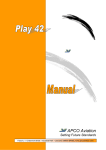
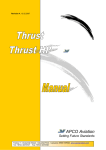
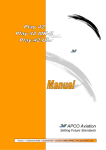
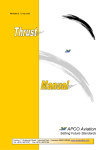
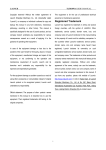

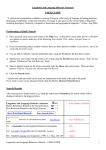


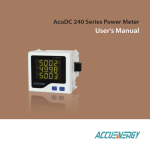
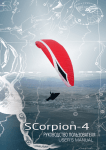

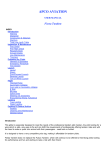


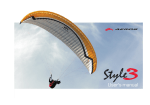
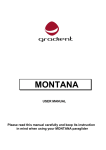

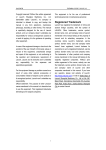
![[en] - User manual, [de] - Betriebshandbuch, [fr]](http://vs1.manualzilla.com/store/data/005845053_1-6d1995608e49c7f1600fcad0c20a630a-150x150.png)
